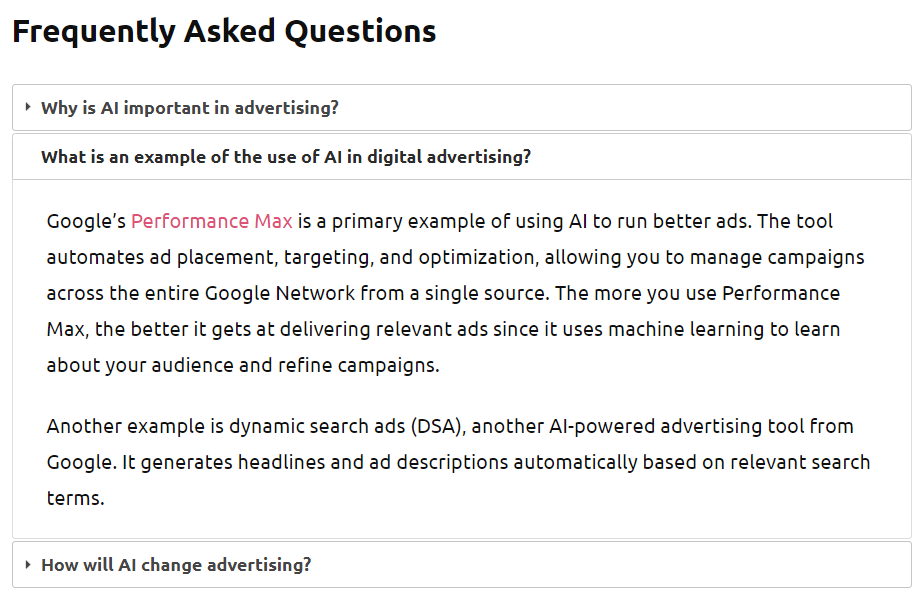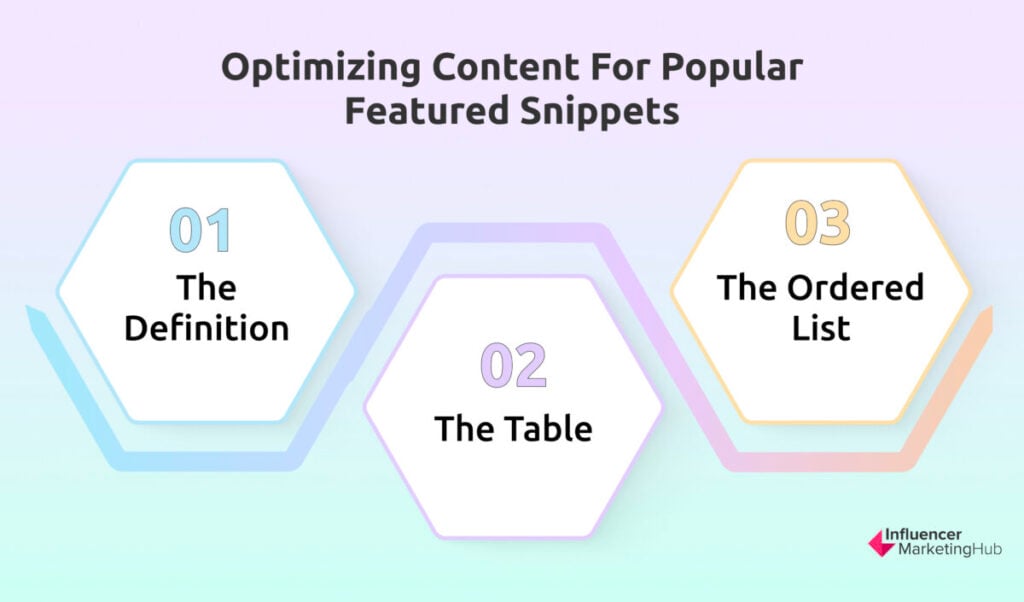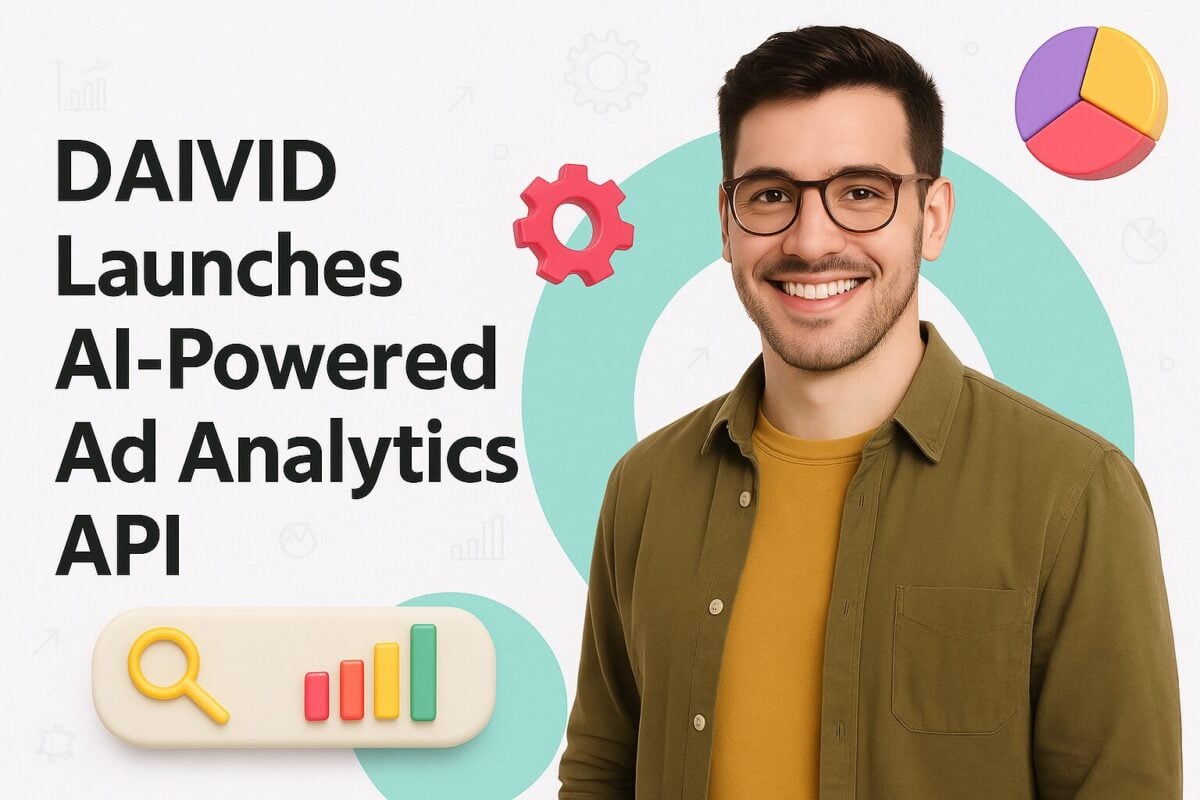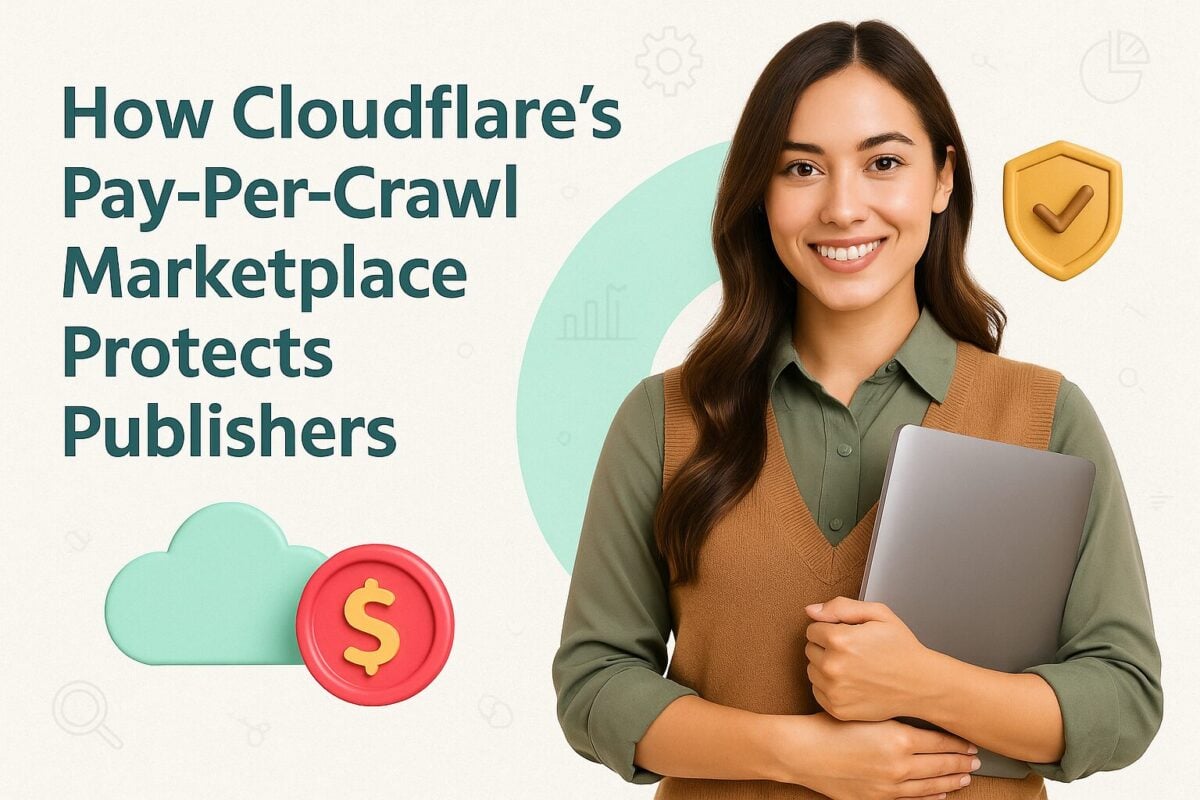OpenAI releasing ChatGPT had an immediate impact on Google, sending the search engine leader into a Code Red emergency. Google immediately saw the potential for ChatGPT to take the lead in search, if it didn’t do something proactively.
As we saw in What is Google Search Generative Experience (SGE)? Google had a few false starts before it felt ready to add a competing Generative AI section to its search engine, and even then, it limited its availability to US residents on a waitlist.
However, it won’t be long before the AI tool becomes mainstream, and you need to be prepared. In addition to all your existing SEO measures, you will need to engage in and be prepared to modify your content creation accordingly.
Google Search Generative Experience Optimization:
- Remember, Google Has Included AI Elements in its Search for Years
- You May Need to Adapt Your Business Model to Survive in the Age of Google SGE
- How Will Google SGE Affect Your SEO?
- Helping Your Content Survive - Google Search Generative Experience Optimization
- The Impact of Google Search Generative Experience on Click-Thru Rates
- Lessons from Featured Snippets
- Other Suggestions for Google Search Generative Experience Optimization
Remember, Google Has Included AI Elements in its Search for Years
While Google Search Generative Experience is new, Google has incorporated some AI elements in its search for some time. And many content creators have almost unconsciously adapted their SEO to cater to them.
Google's RankBrain has been an AI-based component of Google's search algorithm for some time. It uses machine learning to understand the context and intent behind a user's query. It does a surprisingly good job even when the phrasing is ambiguous.
Google also incorporates personalized search, adapting its results to reflect users' past behaviors, preferences, and locations. As a result, everybody receives a slightly different set of search results, meaning that published search rankings will not generally be completely accurate for any given user unless they make their search in Incognito Mode.
In more recent times, Google has encouraged voice search, using natural language processing, and AI helps interpret these queries. In addition, AI plays a major role currently in image and video searches, as it analyzes visual content to determine what they depict.
Google Discover takes a different approach from much of the rest of Google Search in that it relies on predictive search. With Search, users enter a search term to find helpful information related to their query, but Discovery takes a proactive role, using automated systems to find what it believes is a good match with a user's interests.
You May Need to Adapt Your Business Model to Survive in the Age of Google SGE
Online marketing guru, Neil Patel, remains optimistic despite the potential impact of AI search on Google organic and paid search listings. He observed that Google makes $32.78 billion a year in revenue from ads shown on network sites, and if Google stopped sending traffic through SEO to these publishers its revenue would tank, and so would its stock price. And it isn’t just paid traffic. Killing off organic results would also reduce Google’s income by billions of dollars.
Some publishers are likely to suffer from Google’s AI changes, however, and will need to change their business model to survive. Patel gives the example of an affiliate marketing site comparing the 6 best toaster ovens. They will suffer because a searcher can simply ask Google AI to suggest the best toaster ovens to them. Google will draw together suggestions from a range of sources and make a recommendation of potential toaster ovens the searcher should examine more closely. It gives a better experience for the searcher than going to the affiliate site, unless the affiliate site finds a way to provide more value.
You need to ask yourself whether you can offer a better user experience than Google. Remember that neither Google nor your potential customers are focusing on increasing your sales. Google wants to provide the best possible experience for the searcher, who is trying to solve a problem they have. Neither Google nor most searchers are concerned about whether AI reduces visitors to your site.
How Will Google SGE Affect Your SEO?
It’s early days yet, but you will need to make some adjustments to your SEO techniques if you want to remain visible for searches made using Google Search Generative Experience. We have looked at this in more detail in How Does Google Search Generative Experience SEO Work?
Google SGE sits above Google’s organic results. Therefore, content that you’ve optimized to work in Google’s current search model, will most probably continue to appear where it always has. But because of the space taken by the Google SGE answer (and suggested additional questions), even well-optimized (for organic) content may now appear further down the search results page. However, currently, somebody has to actively make an AI search. If they don’t use the AI box, then the search results will remain as they are now. If you continue to use all your current on and off-page SEO techniques, you should keep any existing positions near the top of the organic search results.
However, some Google SGE searches will include everything the searcher needs to know, without them ever having to view your content. This is much the same as Google’s Answer Boxes do now. However, AI means that searchers can ask multi-level questions, unlike previously where they may have had to make multiple searches to find what they are looking for.
However, Google includes links back to original content for many AI searches. This means that in-depth, quality content will still show up on searches, even those using Google SGE.
Helping Your Content Survive - Google Search Generative Experience Optimization
Ironically, it doesn’t appear that there will be any magical formula to make your content thrive in the age of generative AI. Indeed, much of the advice given by SEO gurus over the last few years will still be as relevant as ever. It’s not about including a certain percentage of keywords or trying to “trick” Google into thinking what your web pages are about. Instead, it is about creating genuinely useful, varied, and informative content that humans (as distinct from Google’s bots) will find valuable and helpful.
Google’s primary aim (apart from making a profit) is to be as valuable as possible to its users. Whether you search using the Google Search Generative Experience box, continue to rely on organic search, or (to a lesser extent) follow through to paid ads, you should be able to gain value from the experience. So, Google will continue to reward valuable, informative websites, over those based on thin content and attempts to “trick” the audience.
The Impact of Google Search Generative Experience on Click-Thru Rates
At this stage, the impact of Google SGE on click-thru rates can only be speculated. Again, we have to remember that Google can’t afford to destroy its advertising market, so are unlikely to provide all the answers to everybody’s questions directly on its search results pages.
According to FirstPageSage, ranking on top of SERP in your niche currently generates 39.8% CTR rates in 2023, followed by 18.7% for the second-rate site and 10.2% for the page in the third position. CTRs for ads were considerably lower – 2.1% for top-ranked ads above the organic results, followed by 1.4% for ads in second place. How much these CTRs will fall due to the arrival of a new generative AI box at the top of the page is as yet unknown.
At the moment, according to Backlinko, a Featured Snippet, which sits above the organic listings, receives approximately 8% of all clicks. That content is automatically pulled from web pages in Google’s index. In some ways, Google Search Generative Experience operates like Featured Snippets, as Google places its AI answers above the main listings and uses them to provide genuine information to the user. As we can see, users still click on the sources of Featured Snippets, trying to gain additional information. Users of Google Search Generative Experience will likely display similar behavior.
Of course, Featured Snippets increase the number of “no-click searches”, where Google users don’t click on any of the search results. Here, a searcher takes the information in the Featured Snippet at face value and doesn’t click on the source links. Many users of Google Search Generative Experience will likely display similar behavior.
Lessons from Featured Snippets
While the CTR for terms that currently have Featured Snippets is less than those that don’t, that hasn’t meant that brands don’t try to win the Featured Snippet slots. Some people choose to click through to Featured Snippets, and many still go on to click on the organic listings.
As a result, many websites optimize their content for particular types of Featured Snippets. For example, you can optimize your content for the most popular types of featured snippets as follows:
- The Definition - provide Google with a short (40-60 word) snippet of text to directly use in the Featured Snippet. You can make it easier for Google by setting up your snippet with a question (“What is XXX?”) and then a corresponding answer. The Influencer Marketing hub does this by having Frequently Asked Questions on many posts, making it easy for Google’s robots to find definitions and explanations.

Source: influencermarketinghub.com
- The Table – again, you will have a greater chance of appearing in a Table Featured snippet if you provide Google with a pre-made table of information. Google isn’t going to go through your site collecting data and making a table from it. Instead, it will look for a site that already has the information laid out in a table.
- The Ordered List - lay your page out in a format that presents specific steps or lists of items in a way that Google can easily understand. Make sure you are consistent with your layout and formatting. For example, use [ol] [/ol] HTML code for an ordered list or use the Table tool in a WordPress page.
If you want your content to feature in Google’s AI answers, you can use many of the same techniques used to win the Featured Snippets places.
Other Suggestions for Google Search Generative Experience Optimization
Krista Doyle regularly writes about AI, including in Not Another AI Newsletter, where she passionately argues that AI will help SEO. She also focuses on how Google has been gradually changing the look of its search engine results pages over the last decade. As well as things like ads and Featured Snippets, you now find videos and links to LinkedIn and Medium articles, Tweets, Reddit threads, and even TikTok videos.
With so much diversity in Google’s search results, you can no longer rely on a blog-only content strategy. You should already be diversifying your content if you want to dominate your niche on Google. The arrival of AI doesn’t change this.
However, you mustn’t abandon your existing successful content streams. Diversify doesn’t mean replace. You still need your blog and other on-site content. However, to rule Google you now have to widen your content to include other types – yes, even TikTok videos could be of value to you, even if you don’t use the platform in your personal life.
You might also need to collaborate with PR, to ensure that Google SGE can find suitable things to suggest whenever somebody asks questions about you and your niche. The more your PR team can generate (positive) media mentions, the more material will be available for Google’s AI to use in its answers. Likewise, your SEO team needs to continue generating high-quality backlinks for Google’s robots to find.
Doyle also observes traffic from organic search results decreasing over time, thanks to all the additional “features” Google has added to “enhance” its search engine. She suggests you need to focus more on improving your conversion rates. The better your conversion rate optimization (CRO), the less of an impact reduced traffic from Google will have on you.
In 10 Digital Marketing Ideas to Help You Stand Out From The Crowd, we suggested a series of digital marketing ideas that affect online commerce. Many of these will also help you survive the impact of Google Search Generative Experience when it goes mainstream. In particular, we recognize that "content" is a wide-ranging term covering many types of media. You only have to pay to create a piece of content once, so it becomes a sunk cost. However, you can use that content repeatedly until it goes out of date or needs significant reworking. Google’s AI may water down the benefits of any individual item of content, but a sizable collection of varied content items will keep your name visible, both to Google’s robots and potential customers.
Wrapping Things Up
The arrival of Google’s latest generative AI tool, Google Search Generative Experience, has set alarm bells ringing for many brands using SEO to compete for high organic search positions in Google SERPs. But, as we have seen, it isn’t yet time to panic. Google isn’t going to take over the internet, making it unnecessary for people to visit webpages other than its own. Indeed, Google makes most of its money from directing searchers to webpages belonging to its paid advertisers.
In addition, trials of Google Search Generative Experience indicate that Google freely links to the sources its AI uses to create its answers, and a reasonable number of users follow through to these sites to expand on Google AI’s answer.
The best type of Google Search Generative Experience optimization you can do is to ensure you produce a variety of quality content items, across a range of media types. Indeed, you should be doing this already if you’ve been trying to win visibility in Google’s existing Featured Snippets.




